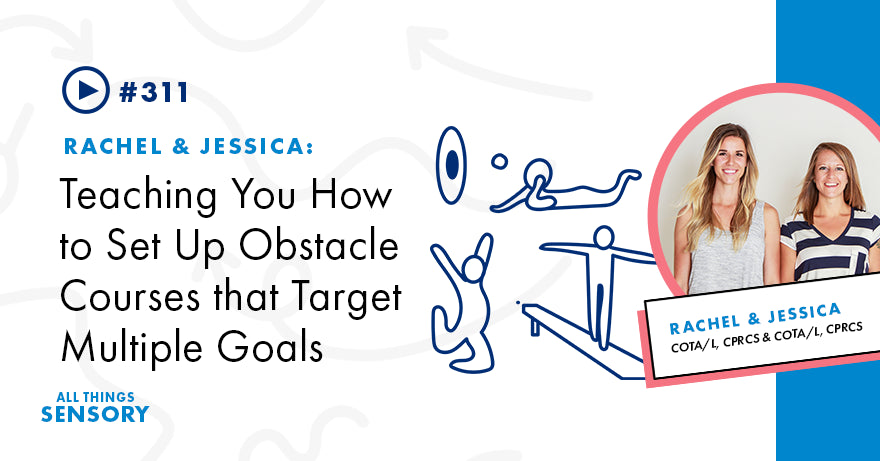Your Cart is Empty

Have you ever wondered why we always recommend obstacle courses for kids during therapy and at home?
It’s because they have so many benefits!
Today’s episode is all about WHY obstacle courses are so beneficial and how to set up obstacle courses for all children!
We talk about our favorite equipment pieces to use, how to identify the number of steps in the obstacle course, how to add a function-based play component, how to add different transitions into it, and MORE!
We’d love to answer your questions on the podcast! Fill out this form -> https://harkla.typeform.com/to/ItWxQNP3
All Things Sensory Podcast Instagram
Harkla Website - Shop Sensory Products!
Primitive Reflex Digital Course
Reflex Integration Memory Game
Should I? Shouldn’t I? Social Thinking Game
Obstacle courses are a fantastic tool for both fun and therapeutic purposes. You can activate different brain and body parts by incorporating various activities, promoting sensory integration, motor skills, and emotional intelligence.
Obstacle courses offer numerous benefits, such as:
Step 1: Choose Your Equipment
Start with available equipment at home, in a clinic, or outdoors. Here are some ideas:
For younger children, begin with one to three steps. Older children can handle more complexity, with three to five steps.
Step 2: Pick a Functional Play-Based Task
Incorporate a goal-oriented game or activity into the obstacle course. Examples include:
Step 3: Plan the Transition
Include a gross motor or sensory component to transition back to the start. Options include:
Step 4: Repeat and Modify
Have the child repeat the course three to five times to build praxis. Adjust the difficulty as needed to ensure the child remains challenged yet successful.
Step 5: Encourage Autonomy
Allow the child to teach you or set up their obstacle course. This builds confidence and reinforces the skills being targeted.
Use Verbal and Visual Instructions: Tailor instructions to the child's level. Demonstrate or use pictures if necessary.
Incorporate Primitive Reflexes: Activities like crawling, Superman poses, or bird dog exercises can help address primitive reflexes while promoting coordination and balance.
Engage with Your Child: Participate in the obstacle course with your child to increase buy-in and make the activity more engaging.
Obstacle courses are a versatile tool for promoting various developmental skills in children. By carefully selecting equipment and activities, you can create an engaging and multi-functional experience that supports physical, sensory, and emotional development.
BORING, BUT NECESSARY LEGAL DISCLAIMERS
While we make every effort to share correct information, we are still learning. We will double check all of our facts but realize that medicine is a constantly changing science and art. One doctor / therapist may have a different way of doing things from another. We are simply presenting our views and opinions on how to address common sensory challenges, health related difficulties and what we have found to be beneficial that will be as evidenced based as possible. By listening to this podcast, you agree not to use this podcast as medical advice to treat any medical condition in either yourself or your children. Consult your child’s pediatrician/ therapist for any medical issues that he or she may be having. This entire disclaimer also applies to any guests or contributors to the podcast. Under no circumstances shall Rachel Harrington, Harkla, Jessica Hill, or any guests or contributors to the podcast, as well as any employees, associates, or affiliates of Harkla, be responsible for damages arising from use of the podcast.
Keep in mind that we may receive commissions when you click our links and make purchases. However, this does not impact our reviews and comparisons. We try our best to keep things fair and balanced, in order to help you make the best choice for you.
This podcast should not be used in any legal capacity whatsoever, including but not limited to establishing “standard of care” in a legal sense or as a basis for expert witness testimony. No guarantee is given regarding the accuracy of any statements or opinions made on the podcast.
Comments will be approved before showing up.